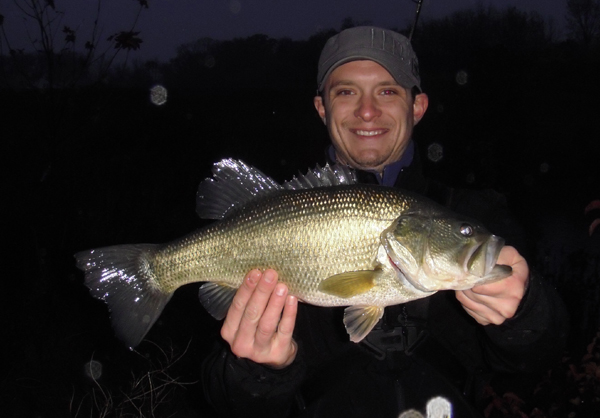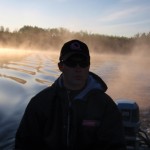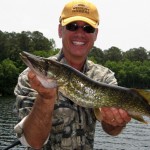By: Chris Loveless – Date Posted: March 13, 2012
Few situations can be more disheartening than a cold front creeping up on a fishing trip that has been planned in the spring. You have read reports and the bite has been great since the fish have begun to feed heavily. Then a front comes in and dooms your trip since bass don’t feed during cold fronts. That is not the case. If you know how bass respond to these fronts you can actually use them to your advantage and have some of the best fishing of the year.
In order to understand how bass relate to a cold front and what they do to adapt to changing conditions, you need to know what a cold front is and how it changes the environment under water. A cold front is an edge of a cold mass of air that is coming in contact with a warm mass of air. This cold air is denser than the warm air and wedges itself under the warm air. The warm air moving upward creating a drop in pressure and can change the temperature up to 50 degrees Fahrenheit. If enough moisture is present in the air, it will rain. All these changes seem like they would have a dramatic effect on bass but they have ways to adjust and adapt to their ever changing environment.
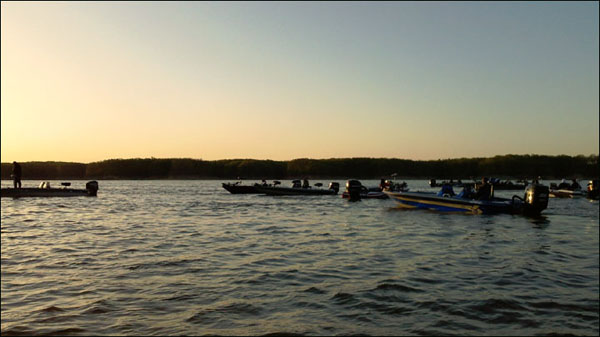
Understanding the swim bladder of a fish is essential to fishing during changing conditions. The swim bladder is a gas filled bag that the fish uses to help remain at neutral buoyancy in the water under all conditions. To put it simply, bass adapt to their ever changing environment if given some time. It’s this ability to adapt that allows me to believe that fish will keep feeding and remain “catchable” during a front.
Since bass adjust, and therefore continue to feed during fronts, all you need to do is find them. Bass relate to structure. Structure is defined as a break in the environment among an otherwise uniform area. It does not matter what the weather is like, fish are always relating to some kind of structure. This structure could be anything. It could be vertical in the water column or horizontal. Most people focus on logs, rocks, or weeds. If that is all you look at you will miss fish though. You need to factor in points, drop-offs, humps, and transitions in the composition of the bottom of the body of water as well. Bass are ambush predators and these areas all play to their advantage under the right conditions.
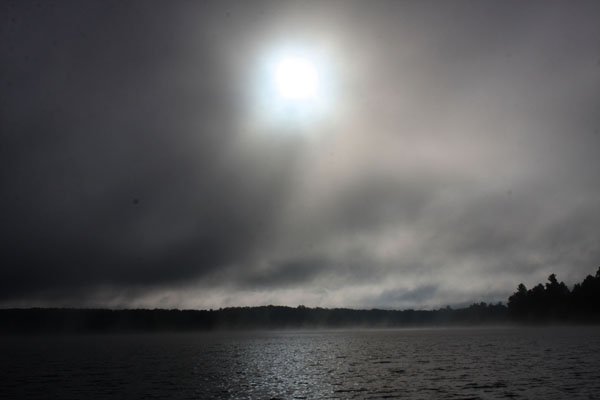
So where do bass go during a sudden cold front in the spring? This time of year bass move to a variety of locations based on the exact body of water to prepare to spawn so we cannot set an exact pattern that will work everywhere. However, there are some key concepts to keep in mind that will produce fish. In most cases bass will not remain shallow during a cold front. Deeper points and humps almost always hold bass during a sudden cold front in the spring. These areas are more stable than the shallow spawning flats. Because of that, they provide shelter for fish retreating from changing temperatures. I like to throw swim jigs and lipless crankbaits to cover water and find where the fish have moved during this time of year. If it is late enough in the season, and there is substantial weed growth, bass may retreat to the cover created by the weeds. Areas with weeds hold temperature better than open water and this stability helps fish to quickly adjust. Since they are in spawning mode this time of year, bass will almost always come right back to the shallow waters as the weather. Therefore if it’s the tail end of a front, it is never a bad idea to check on some of your most productive shallow spots. If it is late enough in the spawn, fish may move off their beds and not return during a severe cold front. Bass are in feeding mode during the spring and depending on what phase of the spawn your area is in the fish could end up moving anywhere or hold tight to beds. Find them and you will catch them. The biggest bass I have seen caught to date was during a spring cold front ripping a lipless crankbait in 40 degree weather. All it takes is putting enough time on the water and figuring out where the fish have moved.


Outside of spring bass are much more predictable during fronts. During the summer season, bass move into the thickest and heaviest cover available to hide out until the front passes. This is the time to pitch a jig and cover every inch of water possible. When there is not much weed growth on your body of water, deep depressions or timber are textbook places to find bass during a summertime cold front.
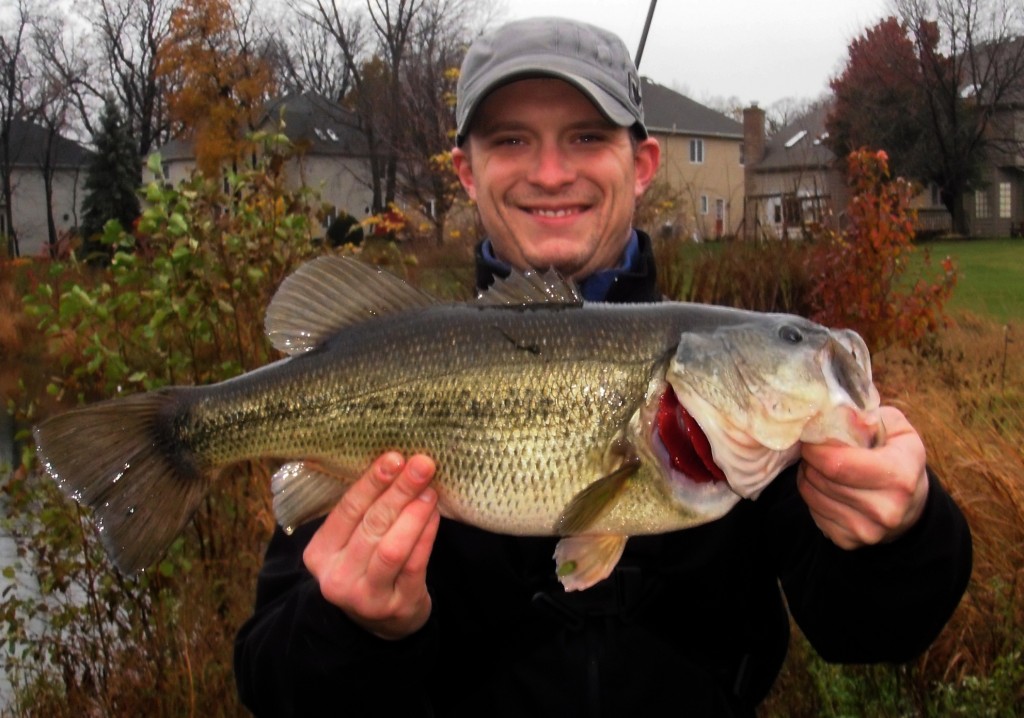
The fall is easiest to pattern during cold fronts. During the fall, fish are already moving deeper due to cooling temperatures and do not move much during a cold front. Whether it’s a cold front or not, fishing deep holes and suspended works well. The best way to find fish during a fall front is to follow the baitfish. Shad, Bluegill, or whatever else the forage in your lake is, the bass will relate to them. A pod of baitfish is structure and should be treated as so and worked thoroughly.
In the end it is important to note that bass adjust during a cold front and so should you. You may need to fish different areas than normal but the fish will eat when you find them. Some of the best days on the water can be had during a cold front because bass will stack up together in cover and allow you to focus on presentation in a big school of fish rather than move to different places after every fish. So go grab some new raingear and get out next time a front moves in. The bass will be biting. Like everything else in fishing, you just have to get out there and find them.
